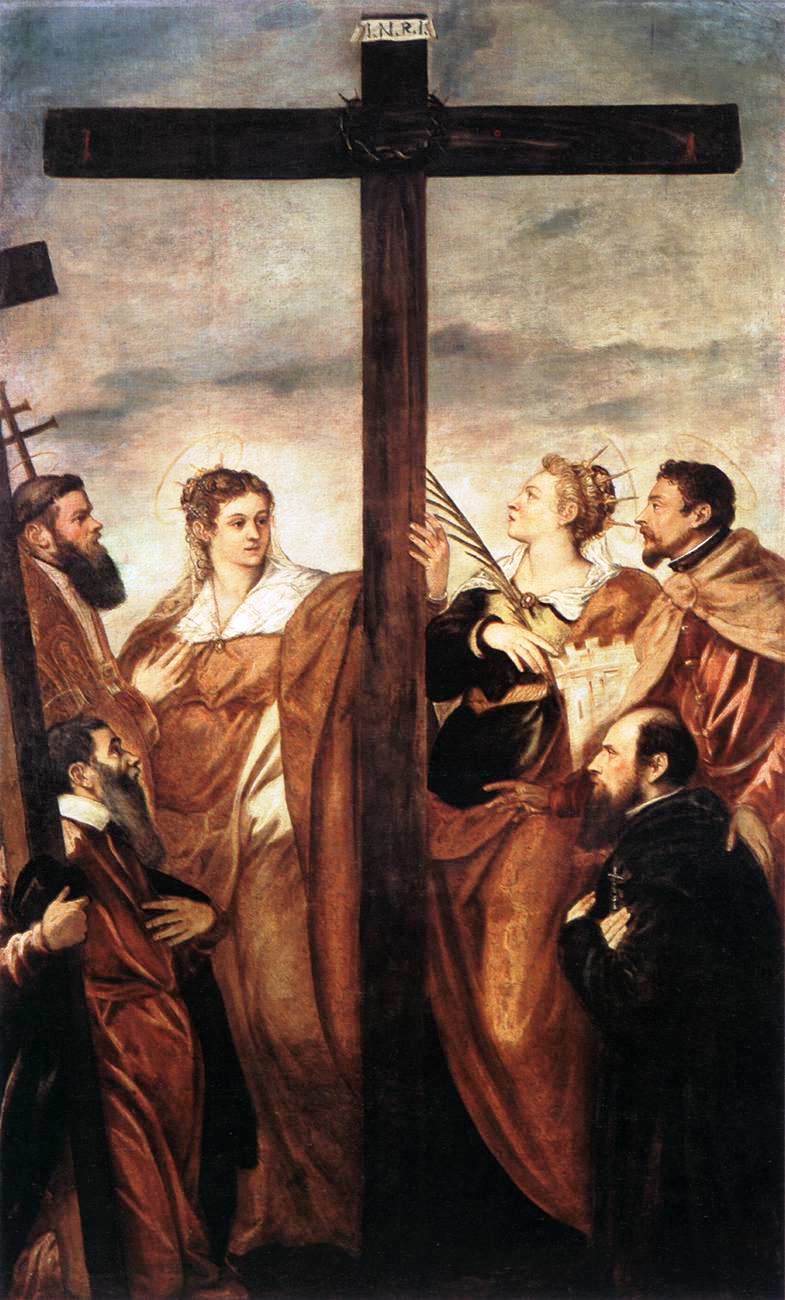Adoration of the Cross
The Adoration of the Cross is a devotion paid to the Cross as the instrument effecting Jesus' saving of the faithful. Evidence for an early veneration of the Cross is found in the writings of Tertullian in the 3rd century AD. Beliefs surround the finding of the actual cross on which Jesus was crucified, which grew quickly into a cult following excavations that were made in 327 — in which the true Cross was said to be found by Helena, the mother of Constantine the Great. The date set for this finding is May 3, observed as "The Invention of the Cross."
Following this, Emperor Constantine dedicated churches to be founded on the site of the Holy Sepulchre (the place where Jesus was buried and rose from the dead) and Mount Calvary (where Jesus was crucified). Called "The Exaltation of the Cross," this act is celebrated as a feast on September 14. Special devotions to the Cross are also paid during the services of Good Friday.
The cult that grew out of the true cross became widespread by the 7th century, with profound legends arising therefrom. Many congregations holding fast to the belief that they possessed recognised fragments of the cross as artifacts. An attempt to ban the cult took place in 787 by the second Council of Nicaea, but the belief has continued to linger. Recovering portions of the cross have led to wars, including the Crusades, the plundering of Constantinople in 1204 and so on. True fragments are attested to have powers of widespread healing, loftier capacities for resurrection, protection of whole cities and so on. It's certain that some fragments legitimately exist as artifacts ... but that many others are false.
